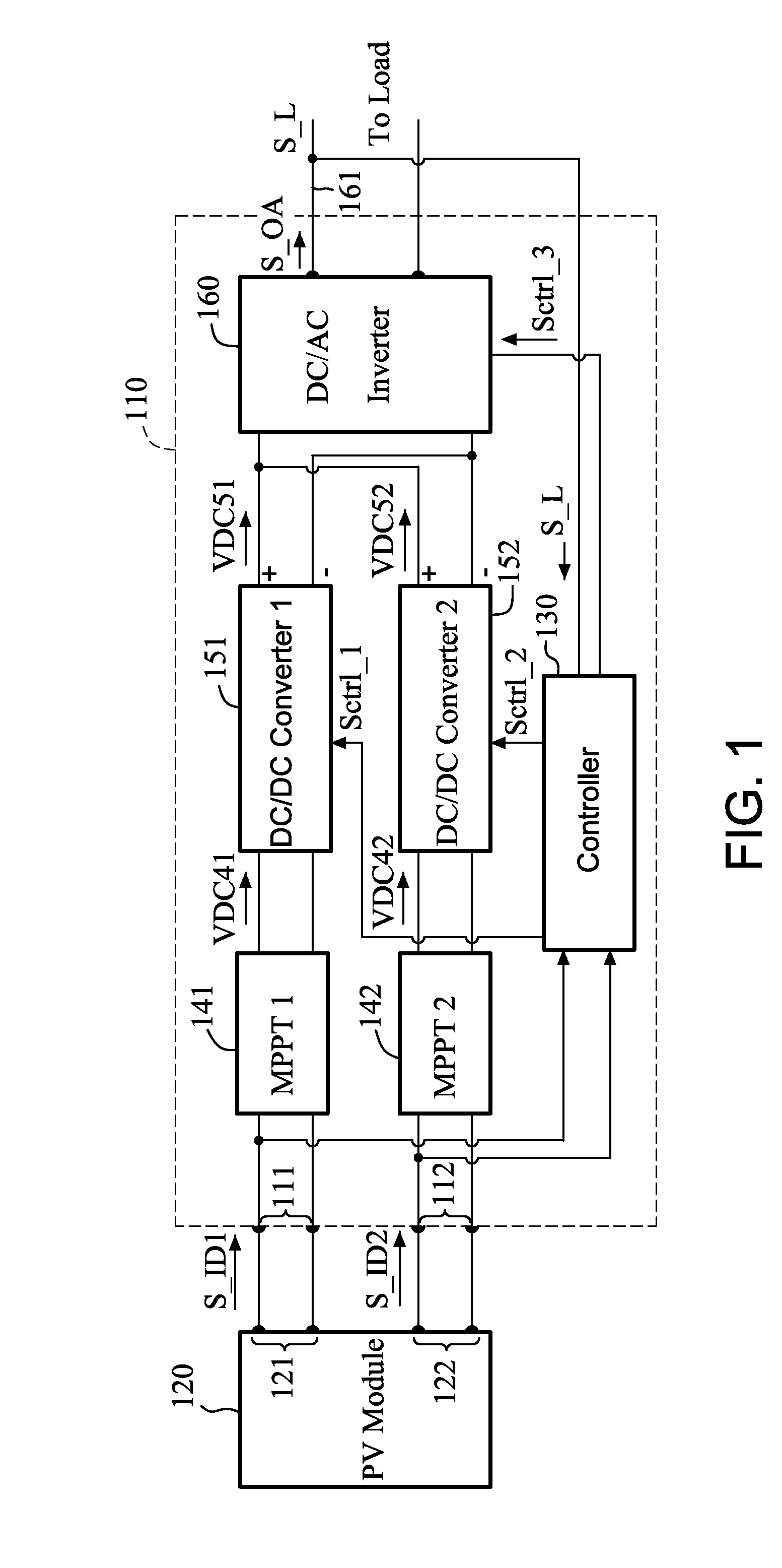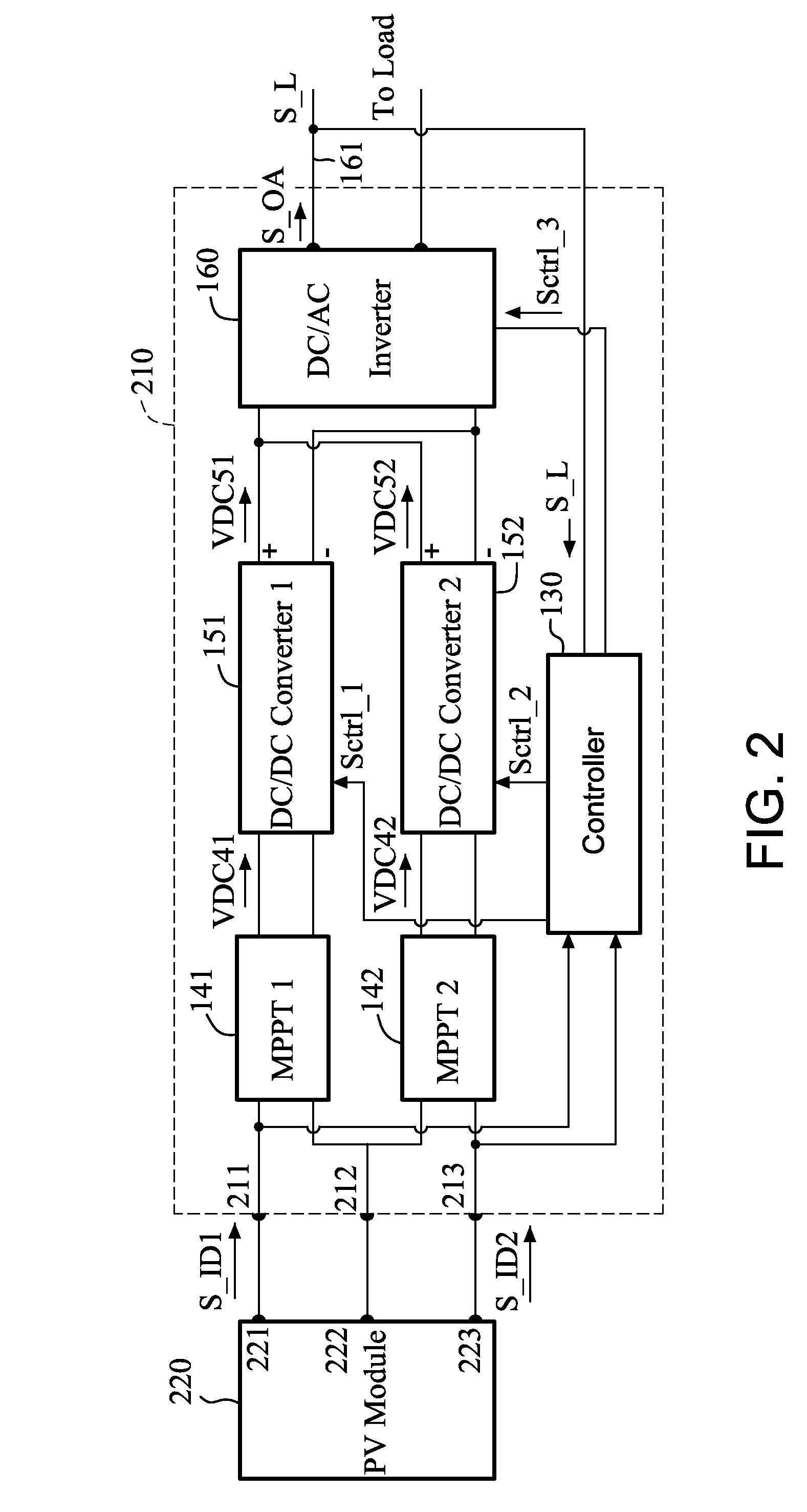Converting device with multiple input terminals and two output terminals and photovoltaic system employing the same
a technology of photovoltaic system and conversion device, which is applied in the direction of dc-ac conversion without reversal, dc network circuit arrangement, semiconductor devices, etc., can solve the problems of high cost, complex fabrication, and the current generated by the two photovoltaic devices must be matched, so as to reduce complexity and wiring and manufacturing costs, and achieve high power efficiency.
- Summary
- Abstract
- Description
- Claims
- Application Information
AI Technical Summary
Benefits of technology
Problems solved by technology
Method used
Image
Examples
first embodiment
FIG. 1 is a schematic diagram illustrating the architecture of a converter in accordance with a first embodiment;
second embodiment
FIG. 2 is a schematic diagram illustrating the architecture of a converter in accordance with a second embodiment; and
third embodiment
FIG. 3 is a schematic diagram illustrating the architecture of a converter in accordance with a
DETAILED DESCRIPTION OF THE INVENTION
FIG. 1 is a schematic diagram illustrating the architecture of a converter 110 in accordance with a first embodiment, which can convert DC (Direct Current) power from a power source (in the exemplary embodiment, a four-terminal photovoltaic module (PV module) 120) into AC (Alternating Current) power that can be fed to a load such as a power grid (not shown).
As shown, the PV module 120 has four output terminals grouped as two pairs of output electrodes 121 and 122. Correspondingly, the converter 110 includes four input terminals grouped as two pairs of input electrodes 111 and 112, which can be coupled to the pairs of output electrodes 121 and 122, respectively. The converter 110 can receive two DC input signals S_ID1 and S_ID2 respectively at the two pairs of input electrodes 111 and 112 from the PV module 120, and then converts the received DC input si...
PUM
 Login to View More
Login to View More Abstract
Description
Claims
Application Information
 Login to View More
Login to View More - R&D
- Intellectual Property
- Life Sciences
- Materials
- Tech Scout
- Unparalleled Data Quality
- Higher Quality Content
- 60% Fewer Hallucinations
Browse by: Latest US Patents, China's latest patents, Technical Efficacy Thesaurus, Application Domain, Technology Topic, Popular Technical Reports.
© 2025 PatSnap. All rights reserved.Legal|Privacy policy|Modern Slavery Act Transparency Statement|Sitemap|About US| Contact US: help@patsnap.com



